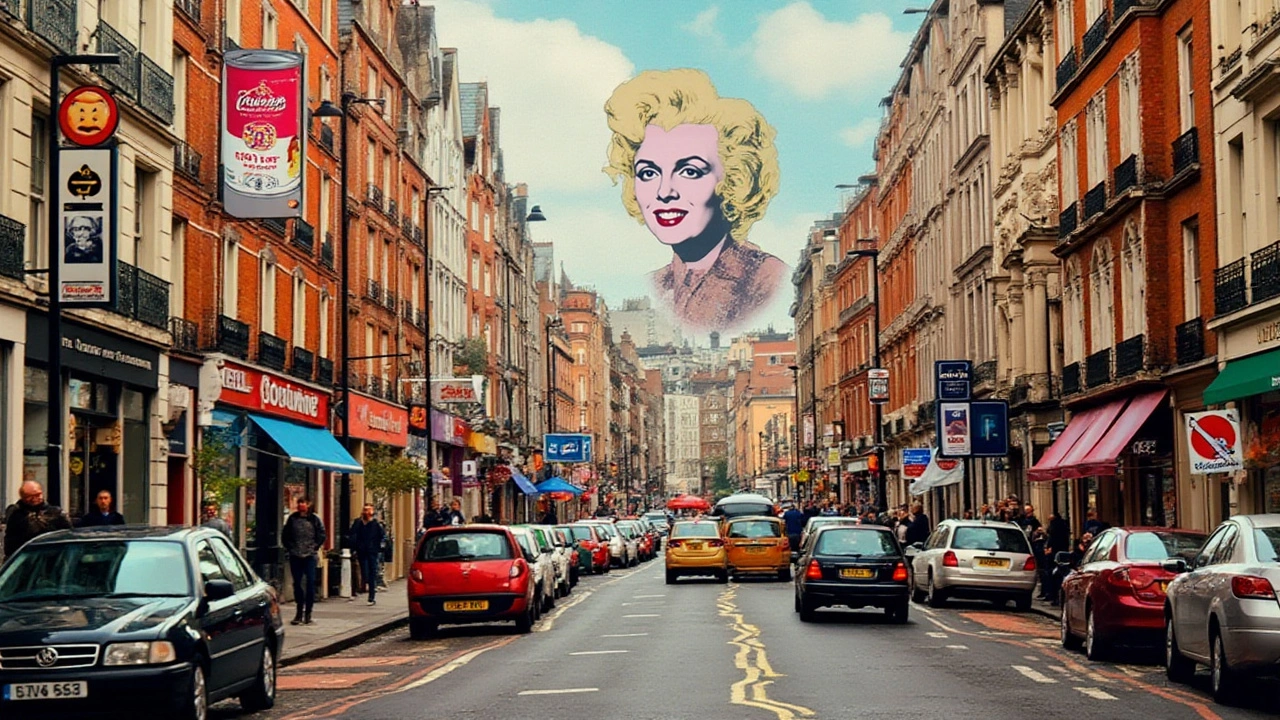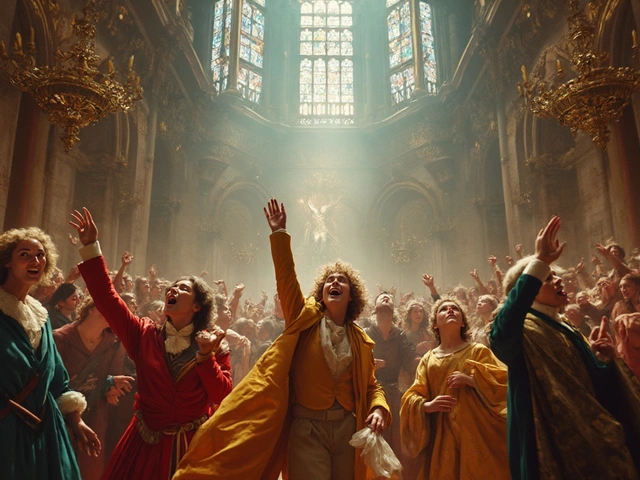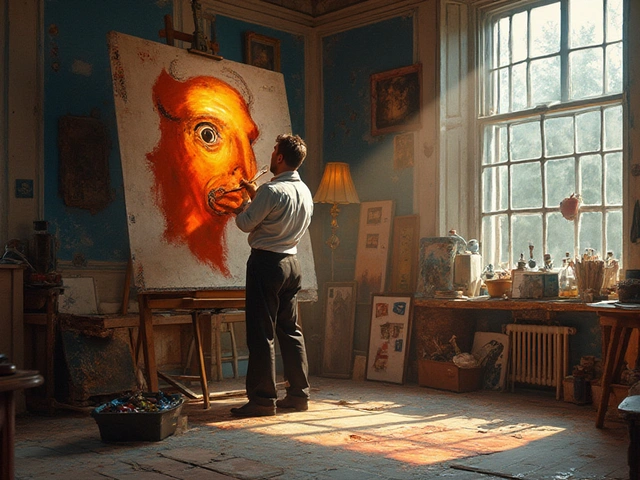Pop Art is more than just a splash of vibrant colors and famous faces; it's a movement that has immersed itself into our cultural fabric since its inception in the 1950s. Born out of a reaction to the consumerism and popular culture of the time, it transformed everyday objects and media into compelling artworks.
In today's digital age, Pop Art hasn't faded into obscurity. If anything, it has morphed and adapted, finding new expressions and platforms. With the rise of technology, artists are discovering innovative ways to merge Pop Art principles with digital mediums, ensuring its ongoing relevance and continued appeal.
- Origins of Pop Art
- Key Themes and Inspirations
- Pop Art and Technology
- Modern Adaptations
- Impact on Contemporary Art
Origins of Pop Art
Pop Art emerged in the mid-1950s, primarily in the United States and the United Kingdom. This art movement was a reaction against the pretentiousness of abstract expressionism. Artists sought to blur the boundaries between 'high' art and 'low' culture, taking inspiration from the consumerism and media saturation of the post-war era.
In America, prominent artists like Andy Warhol and Roy Lichtenstein became the faces of the movement. Warhol, in particular, revolutionized the concept of what art could be by turning everyday items and celebrity images into iconic pieces. His Campbell's Soup Cans and Marilyn Monroe silkscreens are prime examples of how he turned mundane objects into symbols of cultural significance.
Across the Atlantic, British artists such as Richard Hamilton and Peter Blake were making waves in their own right. Hamilton’s work, like his 1956 collage "Just what is it that makes today's homes so different, so appealing?" is often cited as one of the earliest examples of Pop Art. Unlike their American counterparts, British Pop Art often had a more critical edge, examining the influences of American culture and consumerism on British society.
Pop Art was heavily influenced by the Dada movement, which also embraced the use of everyday objects in artistic expressions. However, Pop Art took this concept a step further by incorporating elements of mass production. This was in part influenced by the rapid rise of advertising and media during the era, making the art both accessible and ubiquitous. As a result, Pop Art literally put culture on canvas, allowing audiences from all walks of life to engage with its works.
One striking characteristic of the Pop Art movement was its bold use of color and clear lines, which stood in stark contrast to the heavy brushstrokes of previous movements. This clarity spoke directly to the visual language of advertising and product design. The art was often ironic or humorous, using satire to critique societal norms.
Some critics viewed Pop Art as merely illustrative and commercial rather than substantive, but its intention was precisely to break down those barriers. By showcasing the ordinary as extraordinary, these artists challenged audiences to reconsider their perceptions of art and culture. In doing so, they set the foundation for much of what we consider contemporary art today.
As Andy Warhol famously said, "In the future, everyone will be world-famous for 15 minutes." This prophecy, reflective of Pop Art's fascination with fame and ephemera, still resonates in our current era dominated by social media and instant gratification.
The influence of Pop Art extended beyond the visual arts, impacting music, design, and even fashion. Bands like The Beatles worked closely with pop artists, most notably Peter Blake, who designed the iconic album cover for 'Sgt. Pepper's Lonely Hearts Club Band'. This blending of media and art forms created a rich, interdisciplinary tapestry that continues to inspire artists and creatives across industries.
Key Themes and Inspirations
Pop Art, known for its vibrant colors and striking imagery, often drew inspiration from the everyday world around us. One of the most significant themes was the use of consumer goods and mass-produced products. Artists like Andy Warhol famously used Campbell's soup cans and Brillo soap pad boxes to blur the line between high art and commercial art. This democratization of art brought everyday objects into the spotlight, challenging traditional notions of what art could be.
Another driving theme in Pop Art was the exploration of popular culture. Comics, advertisements, and celebrities became focal points for many artists. Roy Lichtenstein’s comic strip-inspired works, for instance, utilized Ben-Day dots to mimic the printing process of comic books. These pieces were both a tribute to and a critique of the pervasive influence of mass media. By using the imagery that people saw in their daily lives, Pop Art made a bold statement about the nature of culture and consumption.
Celebrity Culture and Iconography
Celebrity culture was another major inspiration for Pop Art creators. Figures like Marilyn Monroe, Elvis Presley, and others were transformed into iconic images. Warhol’s portraits of Monroe, for example, emphasize the mass production of celebrity images, reflecting on how society consumes and discards these icons. This fascination with fame and its impact continues to resonate today, especially in the age of social media influencers and digital celebrities.
One distinctive characteristic of Pop Art is its irony and playful humor. Artists often utilized techniques like parody and satire to comment on societal issues. Claes Oldenburg’s oversized sculptures of common items, such as a giant ice cream cone or clothespin, played with scale to create a whimsical yet thought-provoking experience. These works encouraged viewers to rethink their relationship with everyday objects.
“Pop Art looks out into the world. It doesn’t look like a painting of something, it looks like the thing itself.” – Roy Lichtenstein
A final inspiration worth noting is the movement’s embrace of modern technology. The advent of television, advancements in printing techniques, and the growth of advertising influenced how artists created and shared their work. The reproducibility of Pop Art pieces made the art movement accessible, allowing it to reach a wider audience than ever before.
Understanding the core themes and inspirations of Pop Art helps us see why it remains relevant today. In the digital age, where images and icons are more mass-produced than ever, the principles of Pop Art continue to offer valuable insights. The recurring themes of consumerism, celebrity, and technology reflect ongoing societal trends, making Pop Art a timeless mirror of our world.
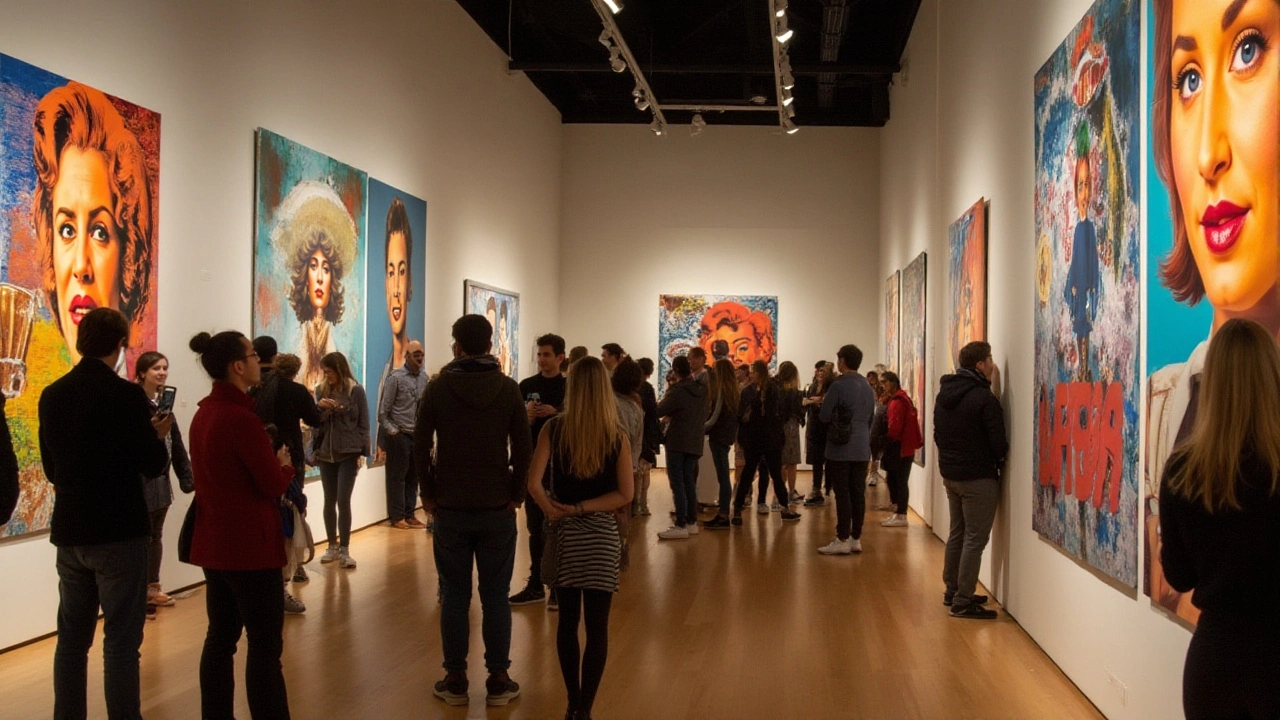
Pop Art and Technology
In the intertwined worlds of art and technology, Pop Art has found a powerful ally. The digital age has expanded the canvas, allowing artists to push the boundaries of their creativity. This symbiotic relationship breathes new life into classic Pop Art themes, making it not just a relic of the past, but a vibrant part of our contemporary experience.
The introduction of digital tools has unlocked a plethora of possibilities for today's Pop Art creators. Software like Adobe Photoshop and Illustrator enables artists to experiment with color and form in ways that Warhol and Lichtenstein could only dream of. These tools have become essential in crafting pieces that speak to the aesthetics and culture of the digital era. The precision and flexibility offered by these programs allow for infinite variations and complex designs that maintain the bold simplicity characteristic of Pop Art.
Social media platforms have also played a crucial role in the resurgence of Pop Art. Instagram, Pinterest, and TikTok are treasure troves of visual delight, filled with modern Pop Art pieces. Artists gain instant feedback, allowing them to refine their work and gauge public interest. They also benefit from the extensive reach of these platforms, which can catapult an artwork from obscurity to viral sensation overnight.
One notable example of Pop Art's adaptation to technology is the rise of NFT (Non-Fungible Tokens) art. By leveraging blockchain technology, artists can now sell unique digital artworks that collectors can trade securely. This innovation has led to a renaissance of digital Pop Art, where limited-edition pieces are highly sought after. For instance, Beeple's everydays series, often imbued with Pop Art elements, sold for millions of dollars at Christie's auction, showcasing the economic impact of modern technology on the art world.
Digital artist Beeple stated, "NFTs have changed the game for artists. Suddenly, your work can be appreciated and owned in a whole new way. It’s a revolution."
Beyond creating and selling art, technology has influenced how we experience Pop Art. Augmented Reality (AR) and Virtual Reality (VR) exhibitions offer immersive experiences, transporting viewers directly into the vivid and dynamic worlds of Pop Art. Imagine walking through a gallery where each piece comes to life, stories unfolding in vibrant digital displays. This level of interaction enriches the viewer's experience, making art more accessible and engaging.
In fact, museums and galleries around the world are embracing these technologies. The Tate Modern in London recently hosted a VR exhibit that allowed visitors to virtually step into Warhol's 'Factory,' experiencing his creative process first-hand. This innovative approach not only attracts traditional art lovers but also engages younger, tech-savvy audiences who might not otherwise visit a museum.
Collaborations between tech companies and artists are increasingly common, giving rise to groundbreaking artworks. Google Arts & Culture, for instance, has partnered with artists to create unique, interactive Pop Art pieces that blend artificial intelligence with human creativity. These collaborations often explore contemporary issues, echoing Pop Art's legacy of social commentary. As we move deeper into the digital age, the fusion of Pop Art and technology continues to evolve, challenging our perceptions and inspiring new forms of artistic expression.
Modern Adaptations
As we zoom into the vibrant world of Pop Art today, it's fascinating to see how the movement has evolved, merging with digital technology to create something uniquely modern. Gone are the days when Pop Art was limited to canvases and gallery walls. In some ways, it has found a new home on digital platforms, where its bold colors and playful imagery can flourish.
A striking example of this evolution is the use of digital software to recreate the iconic styles of Pop Art pioneers like Andy Warhol and Roy Lichtenstein. Artists now employ Photoshop and other digital tools to generate images that capture the essence of Pop Art's bright, commercial appeal but with a contemporary twist. These tools offer limitless possibilities, allowing for intricate detailing and vibrant saturation that traditional mediums struggled to achieve.
Virtual Reality and Augmented Reality
Pop Art's transition into the digital age isn't confined to static images. With advancements in Virtual Reality (VR) and Augmented Reality (AR), artists can create immersive experiences that engage viewers in a completely new way. Imagine stepping into a virtual gallery where the walls are adorned with larger-than-life Pop Art pieces, and every brushstroke seems to pop right out of the frame, almost as if you're part of the artwork. These technologies provide a sensory feast for art enthusiasts, making art more interactive and accessible than ever before.
Paul Goldberger, a respected architecture critic, once said,
"Pop Art sought to break down the boundaries between 'high' and 'low' culture. Today, through new media, it does more than that; it becomes a seamless part of our everyday experience."
Social Media and Pop Art
Social media platforms like Instagram have become crucial venues for the modern adaptation of Pop Art. Artists and designers use these platforms to disseminate their works to a broader audience instantly. Hashtags such as #PopArt and #DigitalPopArt connect creators with enthusiasts, fostering a community that thrives on instant feedback and inspiration. This democratizes art, making it far more inclusive and vibrant.
Another notable trend is the rise of NFTs (Non-Fungible Tokens). By converting digital Pop Art into NFTs, artists can now authenticate and sell their works in a way that was impossible before. This has opened new revenue streams for artists and has made digital Pop Art a hot commodity in the art market.
Pop Art in Advertising and Design
The influence of Pop Art extended its colorful fingers into today’s advertising seems almost inevitable. Advertisers frequently incorporate Pop Art’s striking visual style in campaigns to create memorable and eye-catching graphics. The use of comic-strip-like illustrations and bold, contrasting colors is particularly popular. It's an effective method to capture the public's attention amid the relentless flow of digital information.
Some modern adaptations go beyond traditional forms, utilizing interactive elements in web design that add layers of depth and complexity to the visual experience. Websites that adopt a Pop Art aesthetic often involve animations, dynamic scrolling, and interactive features to engage the user actively. This modern twist creates a multifaceted experience that keeps visitors hooked, proving again the enduring power of Pop Art.
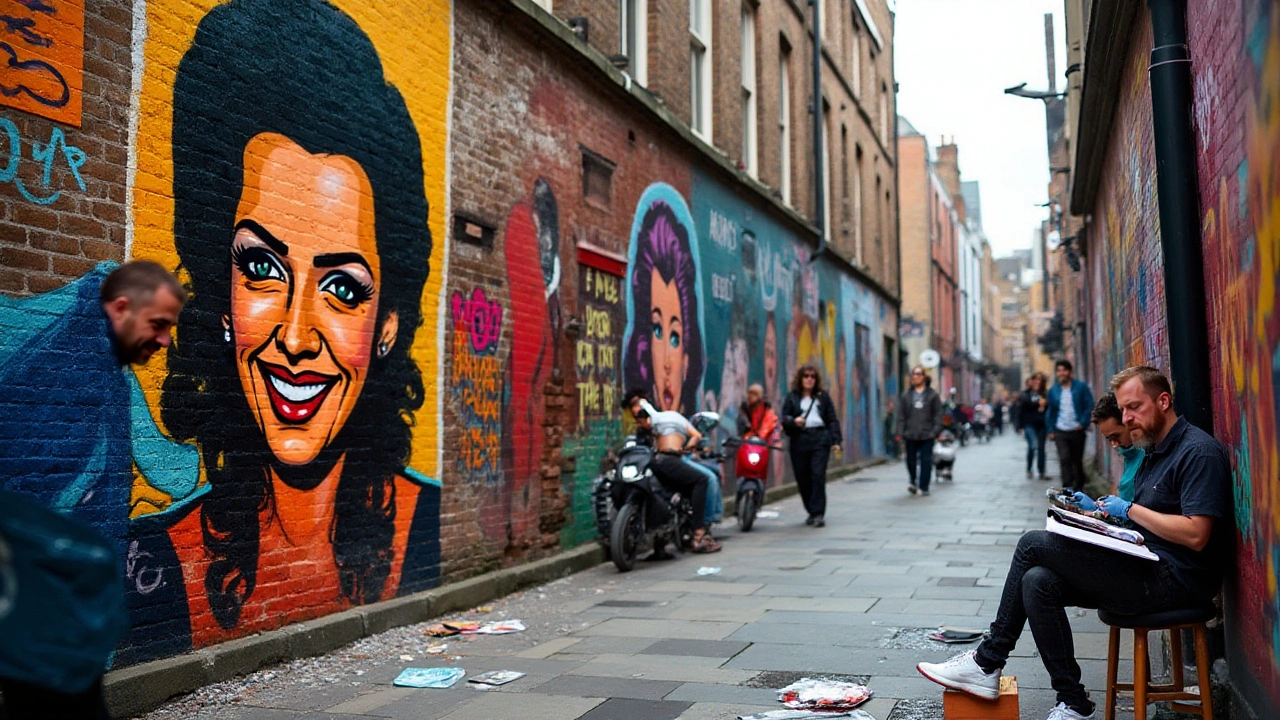
Impact on Contemporary Art
When discussing the impact of Pop Art on contemporary art, one can't overlook its profound influence. Pop Art upended traditional notions of what art should be, merging elements of consumer culture with fine art. This blend set the stage for many of today's leading art movements, including Street Art, Neo-Pop, and even certain facets of digital art. One key facet is the way Pop Art democratized art itself. By using imagery from popular culture and everyday life, artists made art more accessible and relatable to the general public. This shift in perspective can be seen in the works of Banksy and Shepard Fairey, where common themes and recognizable imagery are prominently featured.
Moreover, the influence of Pop Art extends to the technique and medium used by contemporary artists. The sampling of mass culture elements, such as comic strips, advertisements, and product packaging, has continued into the digital era. Today, artists employ digital platforms, social media, and software to create works that reflect current societal norms and challenges, inspired by the principles of Pop Art. Take for example, Jeff Koons, whose balloon dog sculptures borrow heavily from the playful, consumerist ethos of Pop Art while utilizing modern technology to create massive, intricate pieces.
One can observe an enduring Pop Art influence in how contemporary artists value subjects that resonate with popular culture. Digital artists like Beeple achieve this by integrating memes, references to internet culture, and political commentary into their digital compilations. These pieces often gain viral status, underscoring the continuing relevance and impact of Pop Art traditions.
Another remarkable aspect is the role of commercialism in modern art, a concept that Pop Art brought to the forefront. Influential pop artists like Andy Warhol famously said, “Making money is art, and working is art, and good business is the best art.” This ethos is evident today in how artists brand themselves, market their works, and leverage online platforms for global reach. Galleries and online marketplaces have embraced this commercial aspect, making art both a consumer product and a cultural commentary.
Andy Warhol famously said, “Making money is art, and working is art, and good business is the best art.”
Moreover, the role of collaboration in Pop Art has paved the way for contemporary partnerships. Collaborations between fashion brands and artists, much like Warhol’s ventures into commercial art, are now commonplace. These partnerships extend the influence of art beyond galleries and into everyday life. For instance, Louis Vuitton’s collaborations with artists like Takashi Murakami have produced items that are as much art pieces as they are fashion statements.
The adaptation of Pop Art in the digital era also highlights technological integration in art creation. Digital art tools and platforms, like Photoshop, Procreate, and Instagram, have democratized art creation and dissemination, similar to how Pop Art made art more accessible. These tools allow for a broader range of artistic expression and reach, enabling artists to engage with global audiences more effectively.
Reflecting on its journey, it’s clear that Pop Art has left a lasting mark on contemporary art, shaping its themes, techniques, and culture. The movement's embrace of popular culture and commercialism, coupled with its adaptability to new technologies, ensures its relevance in the digital age. Contemporary art continues to draw from Pop Art’s rich legacy, proving that the movement's impact is far from fleeting.

